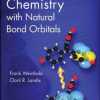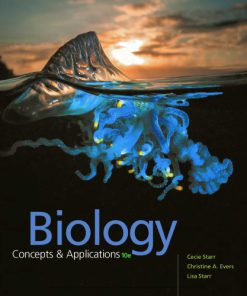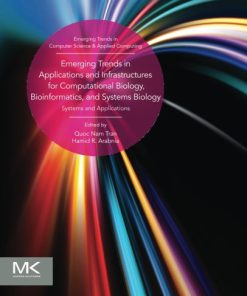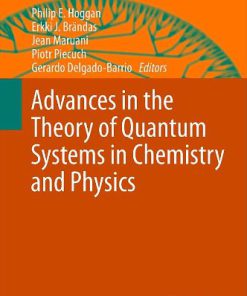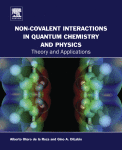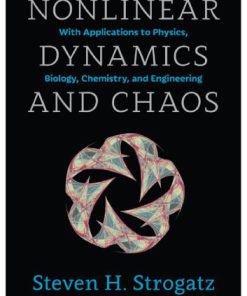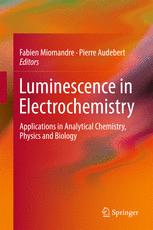Quantum Systems in Physics Chemistry and Biology Advances in Concepts and Applications 1st Edition by Alia Tadjer, Rossen Pavlov, Jean Maruani, Erkki Brandas, Gerardo Delgado Barrio ISBN 9783319502557 3319502557
$50.00 Original price was: $50.00.$25.00Current price is: $25.00.
Quantum Systems in Physics Chemistry and Biology Advances in Concepts and Applications 1st Edition by Alia Tadjer, Rossen Pavlov, Jean Maruani, Erkki Brandas, Gerardo Delgado Barrio – Ebook PDF Instant Download/Delivery: 9783319502557 ,3319502557
Full download Quantum Systems in Physics Chemistry and Biology Advances in Concepts and Applications 1st Edition after payment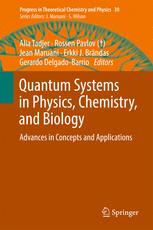
Product details:
ISBN 10: 3319502557
ISBN 13: 9783319502557
Author: Alia Tadjer, Rossen Pavlov, Jean Maruani, Erkki Brandas, Gerardo Delgado Barrio
Quantum Systems in Physics Chemistry and Biology Advances in Concepts and Applications 1st Edition Table of contents:
1 Introduction
2 From Mean-Field to Semi-Classical Kinetic Equations
2.1 The Mean Field as a Starter
2.2 The VUU Approach
3 A Quantum Relaxation Time Ansatz
4 Stochastic Time-Dependent Hartree Fock (STDHF)
4.1 Standard Stochastic TDHF
4.2 From STDHF to Extended TDHF
5 Conclusions
References
2 On the Ordering of Orbital Energies in the ROHF Method: Koopmans’ Theorem versus Aufbau Principl
Abstract
1 Introduction
2 Theory
2.1 Total One-Electron Hamiltonian in the ROHF Method
2.2 High-Spin Half-Filled Open-Shell (HSHFOS) Systems
2.3 Koopmans’ Theorem in the Closed-Shell HF and ROHF Methods
2.4 CI-Based Formulation of Koopmans’ Theorem in the ROHF Method
3 Violations of the Aufbau Principle
3.1 Atom N and Endofullerene {{bf Ncommerat C}}_{{{{bf 60}}}} (I_{h} )
3.2 Atom Mn
3.3 Discussion
Acknowledgements
References
3 Spin Effects in sp2 Nanocarbons in the Light of Unrestricted Hartree-Fock Approach and Spin-Orbit
Abstract
1 Introduction
2 About Open-Shell Molecules in General
3 Reality of sp2 OSMs UHF Peculiarities
4 What Is the Origin of the sp2 OSMs UHF Peculiarities?
5 Empirical Evidences of the Similarity of the SOC and UHF Peculiarities of the sp2 OSMs
5.1 General Characteristics of Spin-Orbit Coupling in Molecules
5.2 UHF Peculiarities of sp2 OSMs and a Comparative View
5.3 Para- and Ferro-Diamagnetism of sp2 OSMs
6 A Glance at Similarity of SOC and UHF Peculiarities
7 UHF SOC Parameters of sp2 Nanocarbons
7.1 A Confine Collection of Necessary Relations. Parameters’ Formalism
7.2 UHF-Based Determination of Delta E_{spl}^{SO} and a^{SO} SOC Parameters
8 Conclusion
Acknowledgements
References
Population Analyses Based on Ionic Partition of Overlap Distributions
1 Introduction
2 IPOD Population Analyses
3 Computational Details
4 Results and Discussions
5 Conclusions
References
Topological Quantum Computation with Non-Abelian Anyons in Fractional Quantum Hall States
1 Introduction: Quantum Computation in General
2 Non-Abelian Anyons and Topological QC
2.1 Construction of n-Particle States: The Braid Group
2.2 Fusion Paths: Labeling Anyonic States of Matter
2.3 Braiding of Anyons: Topologically Protected Quantum Gates
3 The Pfaffian Quantum Hall State and TQC with Ising Anyons
3.1 TQC Scheme with Ising Anyons: Single Qubit Construction
3.2 Single-Qubit Gates: The Pauli X Gate
3.3 The Hadamard Gate
3.4 Two-Qubits Construction
3.5 Two-Qubit Gates: The Controlled-NOT Gate
4 Coulomb-Blockaded Quantum Hall Islands: QD and SET
4.1 Coulomb Island’s Conductance–CFT Approach
4.2 Thermopower: A Finer Spectroscopic Tool
5 The Pfaffian Quantum Hall State
References
Structure and Dynamics
Rb2(3Σ+u) Dimer Interacting with He Atoms: Quantum Structures of Small Clusters and Reactive Scatt
1 Introduction
2 The Interaction Potentials
2.1 2D Model
2.2 3D Model
3 Theoretical Approachs
3.1 The Variational Treatment
3.2 The Reaction Model
4 Results
4.1 Bound States
4.2 Reactive Process
5 Concluding Remarks
References
7 Water Structuring at Non-Polar Fluid Interfaces
Abstract
1 Introduction
2 Computational Protocol
3 Results and Discussion
3.1 Density and Density Profiles
3.2 Radial Distribution Functions
3.3 Voronoi Diagrams
3.4 Water Dipole Moment—Size and Direction
3.5 Surface/Interface Tension
3.6 Hydrogen Bonds
4 Conclusion
References
8 Molecular Design of Organometallic Materials: Effect of the Metallophilic Interactions, Ligand, Me
Abstract
1 Introduction
2 Computational Procedure
3 Results and Discussion
3.1 Effect of the Ligand
3.2 Effect of the Metal
3.3 Effect of the Oxidation State
4 Summary
Acknowledgements
References
9 Electrodynamical and Quantum Chemical Modelling of Electrochemical and Catalytic Processes on Meta
Abstract
1 Introduction
2 Electrodynamical and Quantum-Mechanical Models for Metals, Alloys and Semiconductors
3 Conclusions
Acknowledgements
References
10 Non-Linear Chaotic Dynamics of Quantum Systems: Molecules in an Electromagnetic Field and Laser S
Abstract
1 Introduction
2 Chaos–Geometric Approach to Modelling and Prediction Dynamics of the Complex Systems: General Fo
3 Non-Linear Dynamics of Molecular Systems in an Electromagnetic Field and Laser Systems with Elemen
3.1 Molecular Systems in an Electromagnetic Field
3.2 Non-Linear Analysis of Chaotic Oscillations in a Grid of Quantum Generators
3.3 A Chaos Generation Analysis in the Semiconductor GaAs/GaAlAs Laser System with Retarded Feedback
4 Conclusions
Acknowledgements
References
Landau Quantisation of Electron Motion in the Crust of Highly Magnetised Neutron Stars
1 Introduction
2 Landau Quantisation of Electron Motion
3 Microscopic Model of Highly Magnetised Neutron-Star Crusts
4 Equilibrium Composition and Equation of State
5 Conclusion
References
Atomic and Molecular Properties
12 Electronic and Nuclear Dynamics for a Non-Equilibrium Electronic State: The Ultrafast Pumping of
Abstract
1 Introduction
2 Non-Stationary Electronic States and the Nuclear Dynamics
3 The Model System
4 Results and Discussion
5 Conclusion
Acknowledgements
References
13 On the Inter-Ring Torsion Potential of 2,2′-Bithiophene: A Review of Open Problems and Current
Abstract
1 Introduction
2 Methods for the Calculation of Torsion Potential
3 A Review of Early Publications
4 The 1990s Publications
5 Publications Since 2000
6 Conclusions and Outlook
Acknowledgements
References
14 Theoretical Exploration of the Vibrational Structure and IVR of S0 Thiophosgene at High Excitatio
Abstract
1 Introduction
2 Basic Features of our Vibrational Calculation Method
3 Potential Energy Surface
4 Vibrational Calculations at the Higher Vibrationally Excited States in S0 Thiophosgene and the Rel
5 Statistical Methods and Calculations
6 Conclusions
Acknowledgements
References
15 Why is the “Donor-Acceptor” Stretching a sine qua non in Understanding the Vibrational Signat
Abstract
1 Introduction
2 Calculation Methods
2.1 Geometry Optimization and Harmonic Frequency Calculations
2.2 Anharmonic Vibrational Calculations
2.3 Calculation of Hamiltonian Matrix Elements
3 Results and Discussion
3.1 Structural Aspects from ab initio Calculations
3.2 Which State Couples with IHB Stretch O–O Overtone or Combination Bands?
3.3 Consequences of Symmetry Breaking: Fermi Resonance
4 Conclusions
Acknowledgements
References
16 Relativistic Many-Body Perturbation Theory Calculations of the Hyperfine Structure and Oscillator
Abstract
1 Introduction
2 Relativistic Method to Computing Hyperfine Structure Parameters of Atoms and Multicharged Ions
3 Relativistic Energy Approach to Computing Oscillator Strengths for Multicharged Ions
4 Results and Conclusions
Acknowledgements
References
Effects of Isotope Characteristics on the Electron System Ground State Energy of Helium-Like Ions
1 Introduction
2 Method
2.1 Hylleraas Wave Function
2.2 Matrix Elements of the Hamiltonian
2.3 Scaling
2.4 Variational Procedure
3 Mass Corrections
3.1 Matrix Elements
4 Results
5 Conclusion
References
Biochemistry and Biophysics
18 Computational Study of Michellamines: Naphthylisoquinoline Alkaloids with Anti-HIV Activity
Abstract
1 Introduction
2 Computational Details
3 Results
3.1 Naming of Conformers
3.2 Results in Vacuo
3.3 Results in Solution
4 Discussion and Conclusions
References
19 Integrated Computational Studies on Mutational Effects of a Nylon-Degrading Enzyme
Abstract
1 Introduction
1.1 Experimental Results for Nylon-Oligomer Degrading Enzyme
1.2 Theoretical Analyses on Reaction Mechanism of WT
2 Results and Discussion
2.1 Preparation of Target Systems
2.2 Classical Molecular Dynamics Simulation for Stability of Ligand Binding
2.3 QM/MM CPMD Simulations for Acylation Processes
2.4 Classical Molecular Dynamics Simulation for Induced Fit Processes
2.5 FMO Analyses of Enzyme-Substrate Bound States
3 Conclusion
Acknowledgements
References
20 Damage Induced by Proton Collisions on Building Blocks of Life
Abstract
1 Introduction
2 Molecular Treatment
3 Collision Dynamics
4 Concluding Remarks
Acknowledgements
References
How Can the Green Sulfur Bacteria in the Depths of the Black Sea Use Quantum Computing for Light Ha
1 Introduction
2 The Model and the Physical Picture
2.1 Chooser Mechanism, Beables Created with the Chooser Mechanism
2.2 Vibrational Energy in the Local Oscillators
2.3 Protein Phonon Band
3 Results for the Time Development of the Tiny Burst
3.1 Temperature Effects
4 Discussion
5 Conclusion
References
Fundamental Theory
The Dirac Operator in Quantum Chemistry and Physics
1 Introduction
2 Dirac Operator with External Fields
3 The Eigenvalue Problem of the Dirac Operator
4 Variational Approach
4.1 Algebraic Spectrum of a Hydrogen-Like Atom
5 Two-Electron Dirac Equation
References
23 A Coherent Resonant Cosmology Approach and its Implications in Microphysics and Biophysics
Abstract
1 Introduction
2 A Reappraisal of Cosmology Foundations: Coherence Principle
3 The Fundamental Formula: Evidence for Ultrafast Sweeping
4 Coherence Analysis: A Computing Cosmos
4.1 The General Coherence Condition
4.2 The Global Coherence Condition and the Large Number Problem
4.3 The Single-Observer Condition: Critical Condition, General Quantization and Universe Size
4.4 The Standard Coherence Condition: Grandcosmos and Vacuum Energy
4.5 The Field Coherence Condition: CMB and Biology
5 The ‘Black Atom’ Model
6 Holographic Two-Step Interaction
7 The Universe as a Quantum System
7.1 The Basic Hydrogen Spectrum
7.2 The Gravitational ‘Hydrogen Molecule’
7.3 Quantum Universe and Real Matter
8 The Combinatorial Hierarchy
9 Special Holographic Conservation and Topological Axis
10 Cosmo-Biological Relations
11 The Harmonic Principle
12 Conclusions
Acknowledgements
References
24 The Origin and Evolution of Complex Enough Systems in Biology
Abstract
1 Introductory Remarks
1.1 Reductionism in Natural Science
1.2 The Physicalist Origin of Biology and the Recent Criticism of Darwinism
1.3 Responses to the Criticism
1.4 Proposed Solutions to the Controversy
2 The Theoretical Framework
2.1 Non-Hermitian Quantum Theory
2.2 Statistical Mechanics for Dissipative Systems Far from Equilibrium
2.3 The Liouville Equation and the Prigogine Energy Operator
2.4 The Constructive Role of Quantum-Thermal Correlations
2.5 The Correlated Dissipative Ensemble and its Time Evolution
3 Conclusion
3.1 Consciousness as an Irreducible Process
3.2 Regulation by an Evolved Program
4 Afterword
Acknowledgements
References
People also search for Quantum Systems in Physics Chemistry and Biology Advances in Concepts and Applications 1st Edition:
quantum systems definition
quantum physics in chemistry
a quantum theory
basic quantum physics
Tags:
Alia Tadjer,Rossen Pavlov,Jean Maruani,Erkki Brandas,Gerardo Delgado Barrio,Quantum Systems
You may also like…
Biology and other natural sciences - Biology
Computers - Networking
Biology and other natural sciences
Quantum Dots Applications in Biology 3rd Edition Adriana Fontes
Science (General)
Advances in Protein Chemistry and Structural Biology 94 1st Edition Rossen Donev (Eds.)
Mathematics



